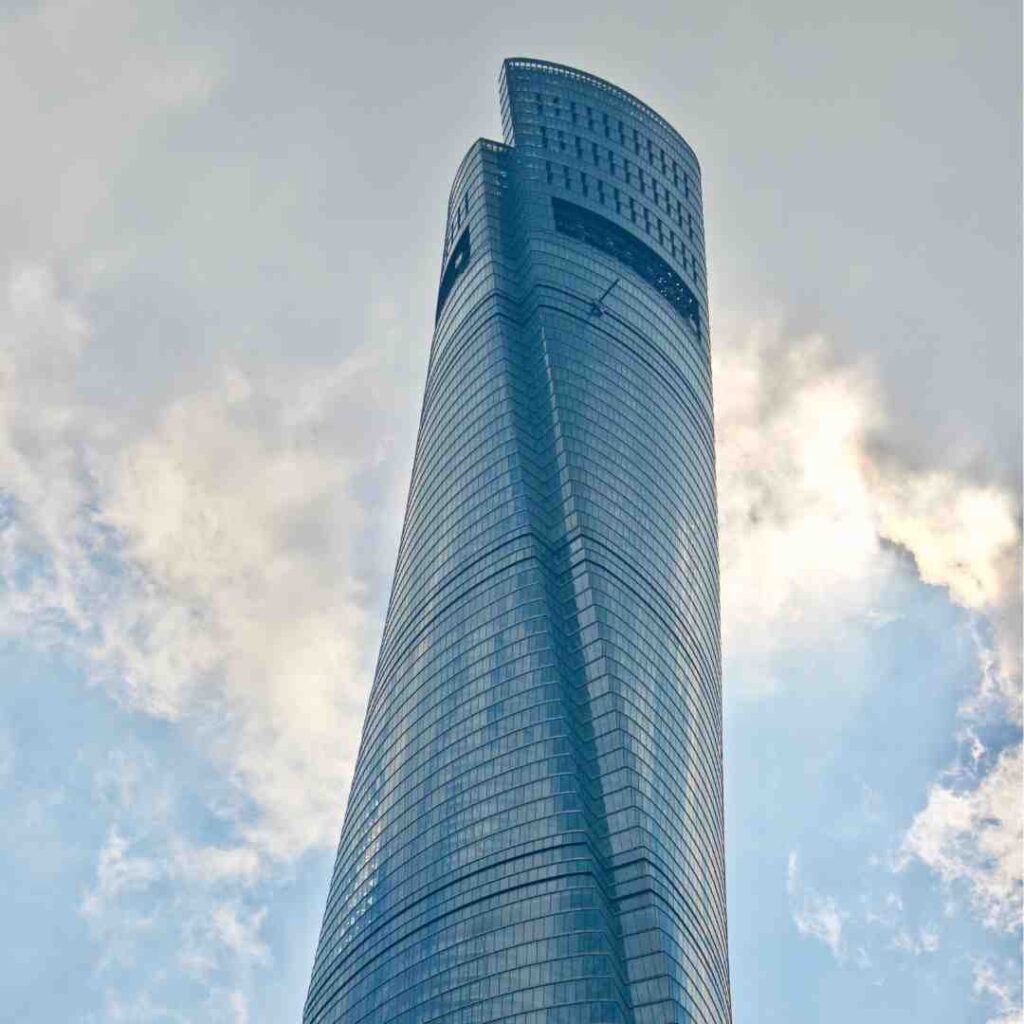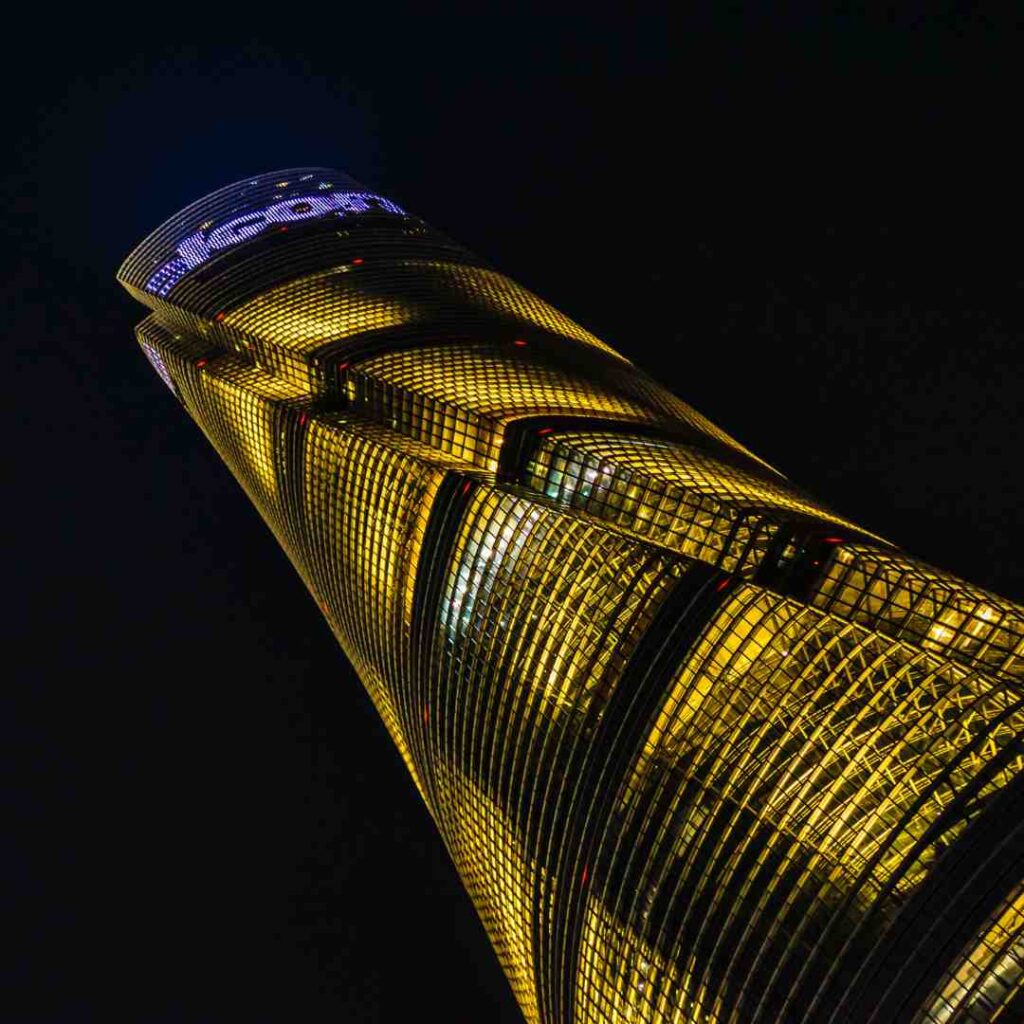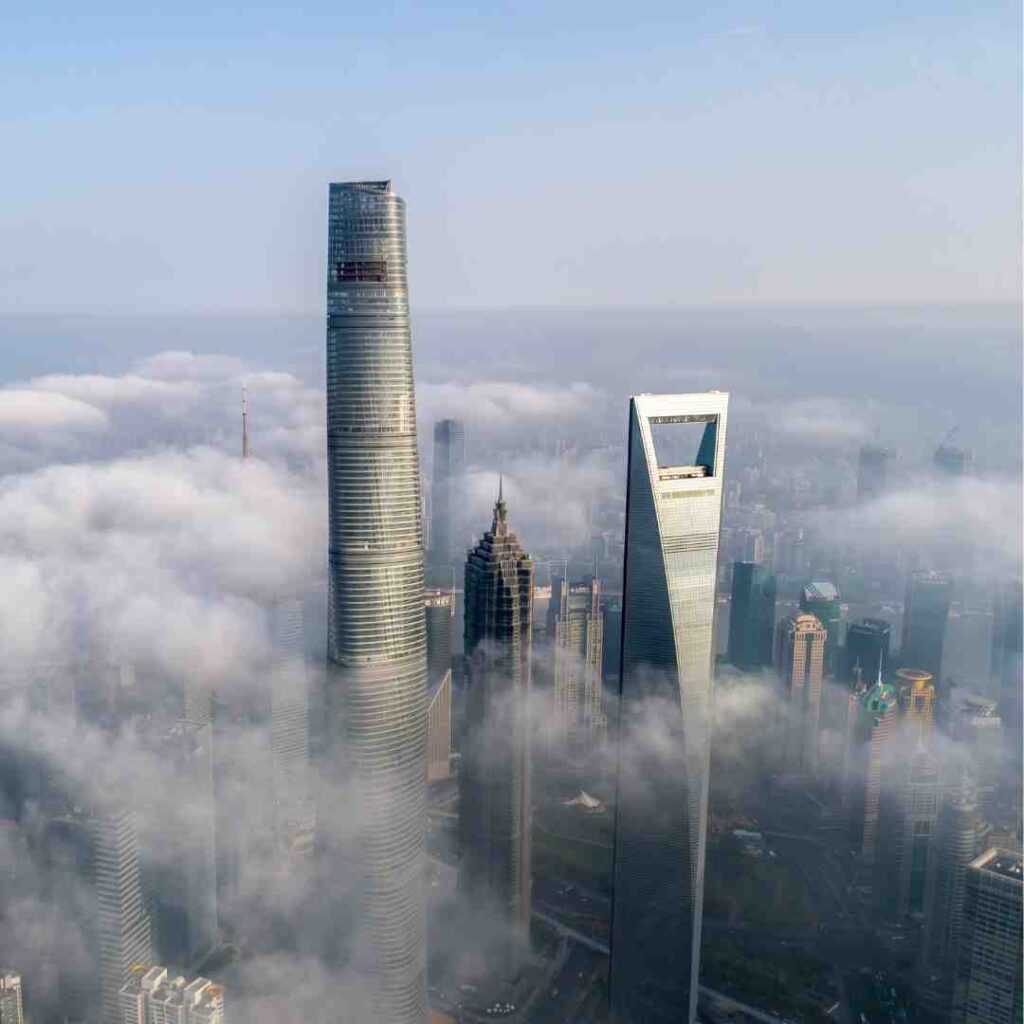Shanghai’s skyline is adorned with remarkable landmarks, including one of the renowned Shanghai skyscrapers, the Shanghai Tower, alongside the Jin Mao Tower and Oriental Pearl Tower.
Together, these architectural wonders solidifies Shanghai’s status as a home to some of the tallest skyscrapers and architectural marvels in the world.

The Shanghai Tower: the highest tower in China
1. Architectural and design feats
The Shanghai Tower is a stunning example of modern architecture, standing as the tallest building in Asia at 632 meters, making it Asia’s tallest Shanghai skyscraper. It boasts a unique spiral design, achieved by twisting the structure by 120 degrees as it rises.
This aesthetic choice is not only visually appealing but also practical. The twisting design helps reduce wind pressure by 24%, significantly lowering construction costs by reducing the amount of structural steel needed.
2. Innovative construction techniques
Construction of the Shanghai skyscraper began in 2008 with substantial challenges due to the soft soil foundation common in Shanghai. To overcome this, engineers employed a deep foundation system comprising thousands of concrete pylons, along with a broad base to distribute weight more effectively.
The use of a slip-forming process allowed the core of the skyscraper to rise efficiently, housing the necessary equipment and materials within a giant steel construction platform that ascended gradually.
3. Environmental considerations and sustainability
The Shanghai Tower features a double-layered glass facade that creates a buffer zone, reducing heat absorption and allowing for extensive natural light, which lowers energy costs.
Additionally, the building includes several green initiatives like rainwater recycling, wind turbines, and sky gardens, contributing to its LEED Platinum certification—a rare achievement for such a tall structure.

4. Economic impact and challenges
Despite its architectural grandeur, the Shanghai Tower has faced economic difficulties. Initially intended to attract numerous businesses and revitalize the area, the building has struggled with high vacancy rates. Issues such as delayed safety permits and undesirable office space layouts, which include awkwardly shaped spaces due to the building’s spiral design, have deterred potential tenants.
5. Cultural and social implications
The Shanghai Tower is not just a commercial space but also a cultural symbol. It offers public atriums with gardens, shops, and restaurants, aimed at enhancing urban life. However, its financial struggles and high operational costs have sparked debate about the viability and sustainability of mega-tall skyscrapers, reflecting broader economic challenges within China.
Fengshui of Shanghai skyscrapers
The design of the Shanghai Tower, in relation to its neighboring skyscrapers, particularly the Shanghai World Financial Center (SWFC), is often discussed in terms of Feng Shui.
The SWFC, with its distinctive trapezoidal aperture at the top, has been controversial in Feng Shui terms. Some practitioners viewed the opening as a “bottle opener” that symbolically “cuts” the skyline, potentially disrupting the flow of Qi (energy) across the cityscape.
This interpretation led to discussions on how subsequent buildings might counteract any perceived negative Feng Shui impacts: the Shanghai Tower, with its spiraling, rounded form, is seen by some as a way to mitigate any negative energy influences attributed to the sharper, more angular SWFC.

1. Harmonizing the skyline
The smooth, curved design of the Shanghai Tower contrasts sharply with the angular, open-topped SWFC. In Feng Shui, curves are often seen as more harmonious and conducive to the flow of positive energy. The spiral form of the Shanghai Tower can be viewed as softening the “cutting” energy of the SWFC.
2. Symbolic ascendance
The Shanghai Tower is the tallest building in China and the second tallest in the world. Its upward, spiraling form can be seen as a symbol of growth and positive energy, which might be interpreted as countering any downward or negative symbolic implications of the SWFC’s design.
3. Strategic positioning
In urban Feng Shui, the placement of buildings in relation to each other is crucial. The positioning of the Shanghai Tower in the Lujiazui area, rising above the SWFC, can be seen as strategically beneficial in a Feng Shui context, potentially ‘overcoming’ the SWFC’s challenging elements.
Check our other posts about the places to travel in Shanghai.
